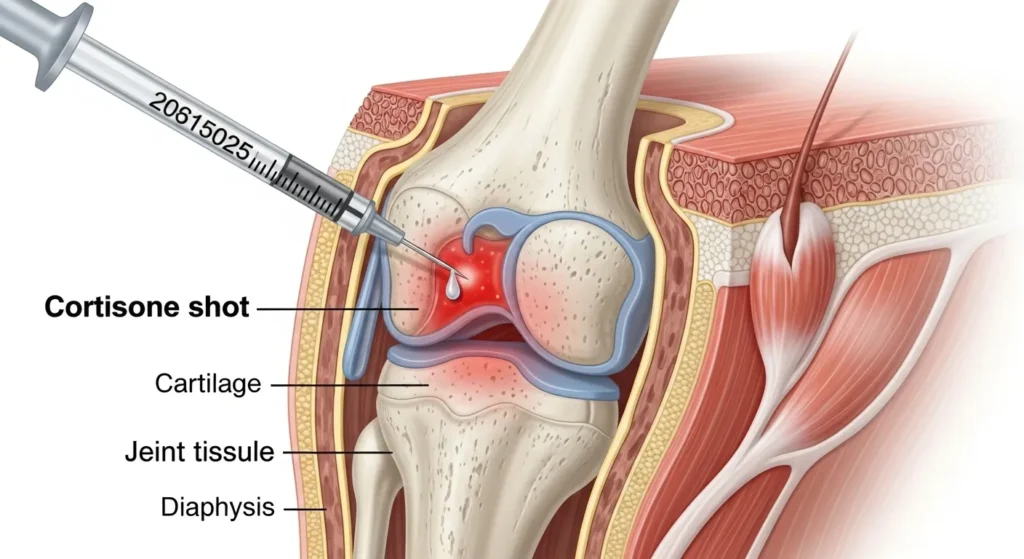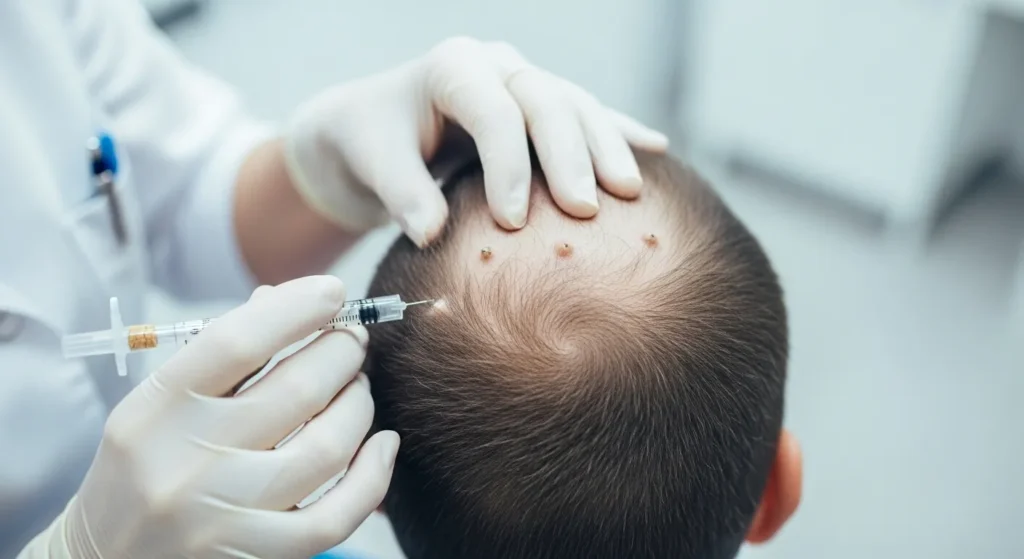Struggling with sudden bald patches or thinning spots? You’re not alone. Cortisone shots for hair loss, also called intralesional corticosteroid injections, are a trusted dermatological treatment that can calm inflammation, stop immune attacks on hair follicles, and stimulate regrowth, often within weeks.
In this guide, you’ll learn exactly how cortisone shots work, which conditions they help, the risks, expected results, and recovery timelines—so you can make an informed decision with confidence.
What Are Cortisone Shots for Hair Loss?

Cortisone shots are direct steroid injections given into the skin of the scalp to treat inflammatory causes of hair loss. They work differently from oral or topical corticosteroids because they deliver medication right where it’s needed—around the affected hair follicles.
Definition & How They Differ from Topical/Oral Steroids
- Topical steroids: Creams, gels, or foams applied to the scalp.
- Oral steroids: Pills that work systemically through the bloodstream.
- Cortisone shots: Localized injections directly into patches of hair loss, providing targeted anti-inflammatory action with fewer systemic side effects.
Medical Overview
- Most common form: Intralesional corticosteroid injections.
- Method: A fine needle is used to inject small amounts of steroid just under the scalp skin.
- Sessions are typically repeated every 4–6 weeks for best results.
Common Corticosteroids Used
- Triamcinolone acetonide is – most common choice for alopecia areata.
- Betamethasone – sometimes used for other scalp inflammatory conditions.
How Cortisone Shots Work
Reducing Autoimmune Scalp Inflammation
Hair loss from conditions like alopecia areata occurs when the immune system mistakenly attacks hair follicles. Cortisone injections:
- Suppress local immune activity
- Reduce inflammation
- Create a favorable environment for hair regrowth
Evidence & Efficacy Overview
- Clinical studies show 60–80% regrowth in mild to moderate alopecia areata.
- Intramuscular steroid regimens have achieved up to 80% significant regrowth within ~3.4 months in some studies.
- Results vary based on severity, duration of hair loss, and patient response.
Conditions Treated & Those They Don’t Help
Effective For
- Alopecia areata (patchy hair loss)
- Lichen planopilaris
- Discoid lupus erythematosus
- Frontal fibrosing alopecia
- Scalp psoriasis (when causing hair shedding)
Not Effective For
- Androgenetic alopecia (male or female pattern baldness)
- Telogen effluvium (stress-related shedding)
- Trichotillomania (hair-pulling disorder)
- Nutritional deficiencies causing hair loss
Procedure Details
Step-by-Step
- Consultation: Dermatologist confirms diagnosis.
- Preparation: Area cleaned; numbing may be applied.
- Injection: A Fine needle is used to inject the steroid solution into the affected patches.
- Aftercare: Minimal downtime; avoid scratching or applying irritants for 24 hours.
Expected Timeline for Results
- 2–4 weeks: Early regrowth may be visible in responsive cases.
- ~3 months: Noticeable thickening in treated areas.
- Ongoing sessions: Often required every 4–6 weeks for sustained results.
Relapse Likelihood & Maintenance
- Relapse can occur after stopping treatment, especially with alopecia areata.
- Some patients need maintenance injections every few months.
Risks, Side Effects & Safety
Common Short-Term Effects
- Mild pain at the injection site
- Temporary redness or swelling
- Bruising
Long-Term Risks
- Skin atrophy (thinning)
- Hypopigmentation (light patches)
- Rare systemic absorption effects
Minimizing Risk
- Use the lowest effective steroid dose
- Space injections appropriately
- Always have injections administered by a qualified dermatologist

FAQs
How long before cortisone shots show results?
Most people notice new hair growth within 4–6 weeks, but it can take up to 3 months for visible improvement.
Do cortisone injections cause more hair loss?
Some mild shedding may occur initially, but this is temporary and part of the hair cycle reset.
Can I combine cortisone shots with minoxidil or other treatments?
Yes—combining therapies can improve results, but only under medical supervision.
Are cortisone shots painful?
The injections can cause mild discomfort, but numbing cream can make the procedure nearly painless.
How long should I avoid exercise post-shot?
Light activity is fine the same day, but avoid heavy sweating for 24 hours to minimize irritation.
Next Steps
If you’re dealing with patchy or inflammatory hair loss, early treatment gives the best chance of regrowth. Cortisone shots are safe, effective, and backed by decades of dermatology experience.
Book a consultation with Dr. Rana Irfan in Islamabad today to get a professional diagnosis, explore cortisone shot options, and start your journey toward fuller, healthier hair.
